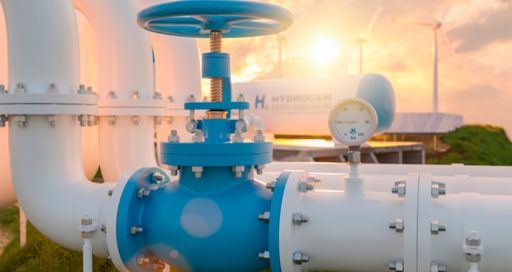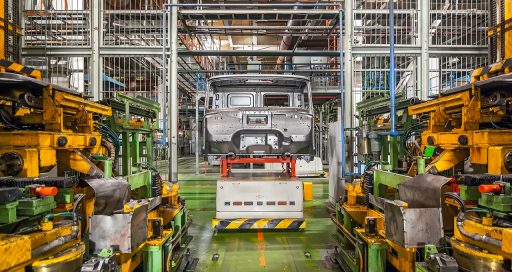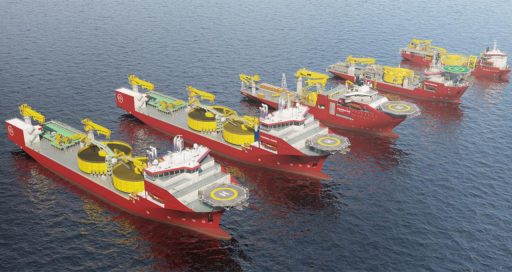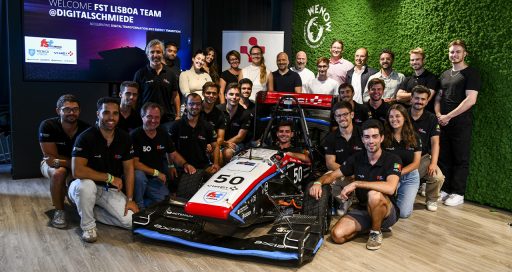With Oh!Zone and VHyNSEA, renewable hydrogen is gaining momentum in Spain
Reading time: 5 min
In Spain, VINCI Energies is actively promoting renewable hydrogen with the creation of a dedicated solution based on two flagship projects, one involving wastewater treatment plants and the other in the seaport sector.

In May 2022, VINCI Energies in Spain launched a dedicated renewable hydrogen solution. Leading the way with this particular energy carrier, the business unit is already part of the HyDeal Asturias project – an EPC contract managed by VINCI Construction Grands Projets – and involved in various other renewable H2 production projects currently in the feasibility study phase.
With Omexom Barcelona Renovables y Comunicaciones (an Inove Ingeniería business unit), Actemium and Axians teams in Spain, VINCI Energies intends to play an even more active role in the booming Spanish hydrogen market, in line with Spanish government ambitions. Against this backdrop, the business unit is running two flagship projects: Oh!Zone and VHyNSEA.
Oh!Zone: meeting the challenges of wastewater treatment plants
This first solution is a standardised process for renewable hydrogen and ozone production that can be replicated and adapted for every type of water treatment plant. The objectives of Oh!Zone are to obtain cleaner water, promote the circular economy, reduce the carbon footprint and promote energy autonomy.
As Alejandro García, Director of Hydrogen and Ports at VINCI Energies Spain, explains: “VINCI Energies in Spain and the A Coruña municipal water company (EMALCSA) are working together on the feasibility study for this project, which must address two major challenges facing wastewater treatment plants: to achieve greater energy autonomy and reduce their electricity bills; and to offer people the highest possible sanitary guarantees in terms of water treatment.”
In terms of sanitation, the separation of hydrogen and oxygen by electrolysis has to allow the effective transformation of oxygen into ozone for incorporation into water disinfection processes.
The Oh!Zone and VHyNSEA projects combine the varied expertise of VINCI Energies through Omexom, Actemium and Axians
This project, for which the budget is close to €8.7 million, would be implemented at the A Telva drinking water treatment plant, which supplies more than 385,000 people in A Coruña province at the northeastern tip of Spain, where the hydrogen and oxygen production plant will be installed. Alejandro García continues: “Across more than 3,800 water treatment plants in the country, there are at least a hundred opportunities to develop and digitalise projects to generate and/or supply renewable hydrogen and oxygen.”
VHyNSEA: adding value to the ecosystem of seaports
The VHyNSEA project is focused on developing infrastructure for the small-scale production, storage and supply of liquid hydrogen (LH2) for ships that currently use liquefied natural gas (LNG) as fuel.
The possibility of production in situ close to the point of supply gives LH2 an advantage over fossil fuels that often have to be transported long distances, with an increased impact in terms of CO2 emissions. “Complementary LH2 infrastructure can add value to the ecosystem of a seaport and offer its existing customers alternative fuels with low carbon emissions,” says Alejandro García.
With a budget of over €7.4 million, the VHyNSEA project, just like Oh!Zone, combines and applies the varied expertise and capabilities of VINCI Energies, notably from Omexom for energy system design, Actemium for process integration and Axians for IT systems integration.
Madrid’s ambitions
The Spanish government hopes to install 4 GW of electrolysers nationally by 2030. Combining this with Portugal’s target of 2 to 2.5 GW, the Iberian Peninsula should be able to provide 10% of the 65 GW electrolysis capacity target specified in the European Union’s REPowerEU 2030 plan.
In its strategy document “Hydrogen Roadmap: A Commitment to Renewable Hydrogen” published in October 2020, the Madrid government called for green hydrogen to represent 25% of total industrial hydrogen consumption in Spain by 2030.
Beyond the industry sector, Spain also plans to gradually introduce hydrogen into sectors that have never used it before, such as transport, with the creation of a network of at least 100 to 150 public hydrogen service stations, to be easily accessible and no more than 250 kilometres apart.
Another objective is to install fuel cell energy management facilities and hydrogen supply points in Spain’s five busiest ports and airports. This equates to a total investment of €8.9 billion.
17/07/2023





